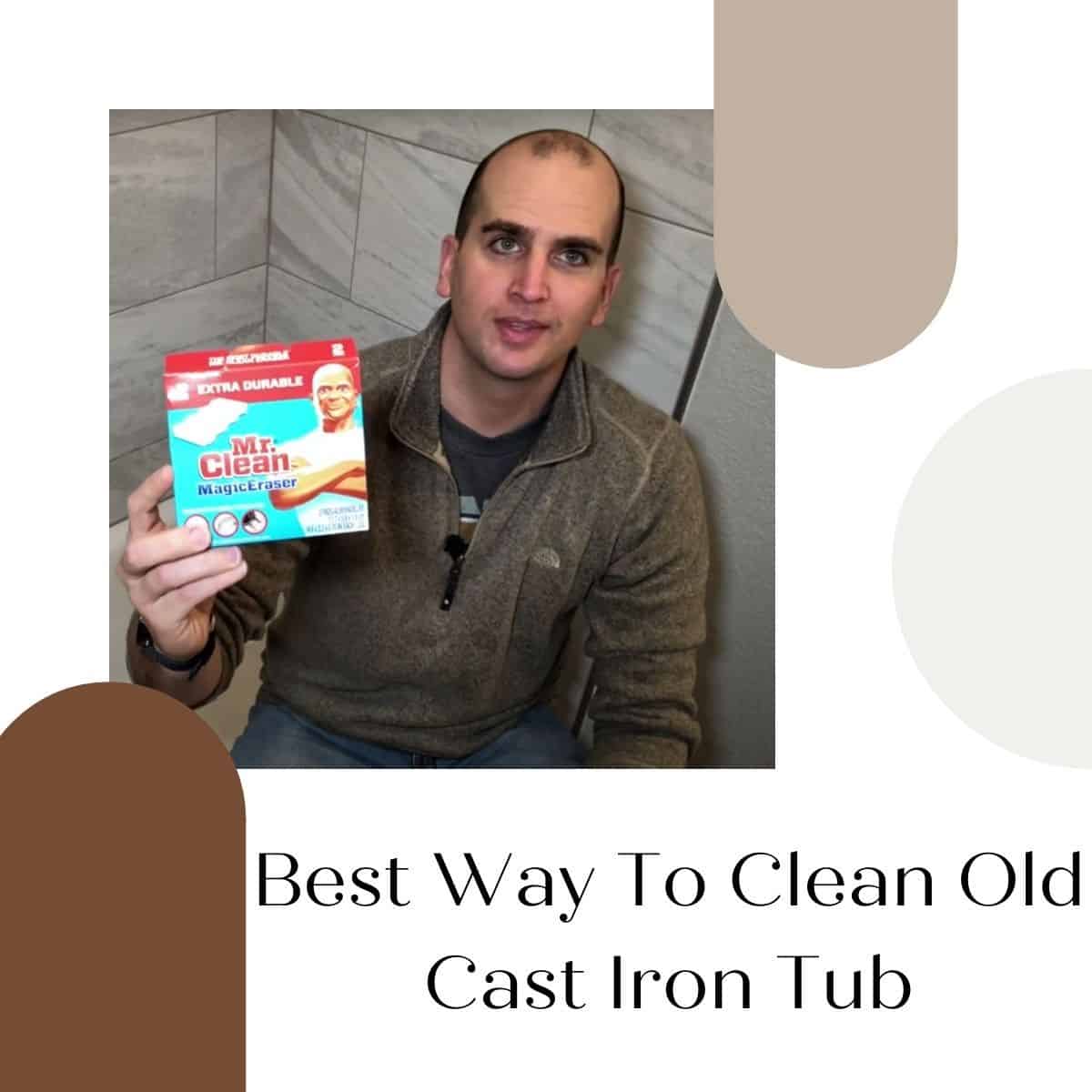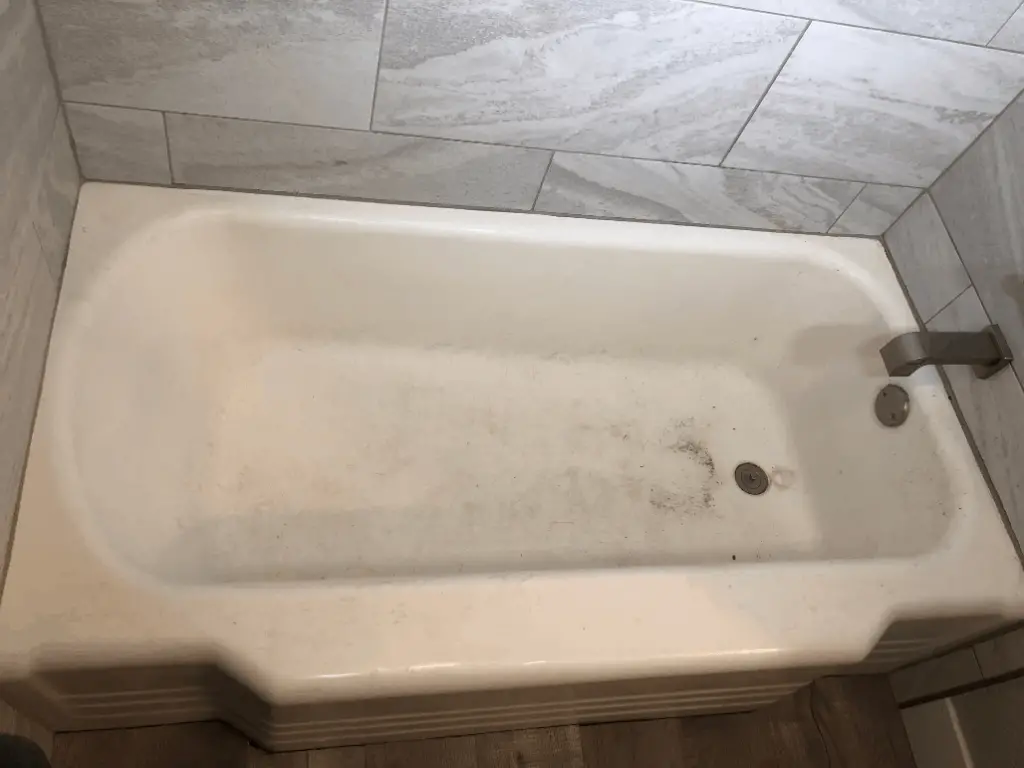
One of the most common frustrations involved in our home is the difficulty in cleaning old-fashioned cast iron tubs.
This style of tubs involves a cast iron base coated with porcelain enamel, and while they are very heavy-duty, they also need occasional in-depth cleaning between uses.
The best way to clean an old cast iron tub is with a Mr. Clean Magic Eraser. This product effectively removes the dirt and stains from this older style of cast iron tub and does not require any additional preparation or steps to complete. Simply wet the eraser, begin scrubbing at the stained portions of the tub, and it will live up to its name.
Continue reading as we discuss many questions and concerns that people have when cleaning their cast iron tubs. However, if you prefer a video format, check out our YouTube channel for a video discussing these different cleaning methods!
What Causes Brown Stains In Bathtubs?

Brown stains in bathtubs and other bathroom fixtures are not uncommon, and they are almost always due to the same culprit. If you live in an area with a high amount of iron in the groundwater, it can cause a slight discoloration in the form of iron oxide. This iron oxide results in a brownish-red color and hardens onto your fixtures.
Thankfully, while these stains are tough to remove through most cleaning methods, the Mr. Clean Magic Eraser does an excellent job taking care of them. Suppose you notice that these stains reappear quickly, or you find discoloration in the water used for your laundry as well. In that case, it is worth looking at a filtration system for your home water supply to assist in preventing the stains from appearing in the first place.
How Do You Clean An Old Cast Iron Tub?
Finding the best method for cleaning a cast iron tub involves doing some trial and error. Fortunately, we recently completed some renovations of one of our rental properties, and while we redid the tile around the old tub in the bathroom, the tub itself has years’ worth of soap scum and stains from dirt and rust. So I’ve tried out four different methods to clean it and determine which option works the best.
The four cleaning methods we tried were:
- Warm Water With Ammonia, and Baking Soda
- Lemon Juice and Salt
- Dawn Dish Soap and Vinegar
- Mr. Clean Magic Eraser
To make this project more manageable, I started using a Phillips head screwdriver and a Rigid faucet and drain multitool to take the overflow drain cover off. Taking off some of the hardware makes it much easier to get up close and personal to clean the grime. I used a combination of a standard scrubbing brush and a couple of sponges with a lightly abrasive side to apply these cleaning methods.
Once I removed the hardware, I began the cleaning process using the methods above:
Water, Ammonia, and Baking Soda
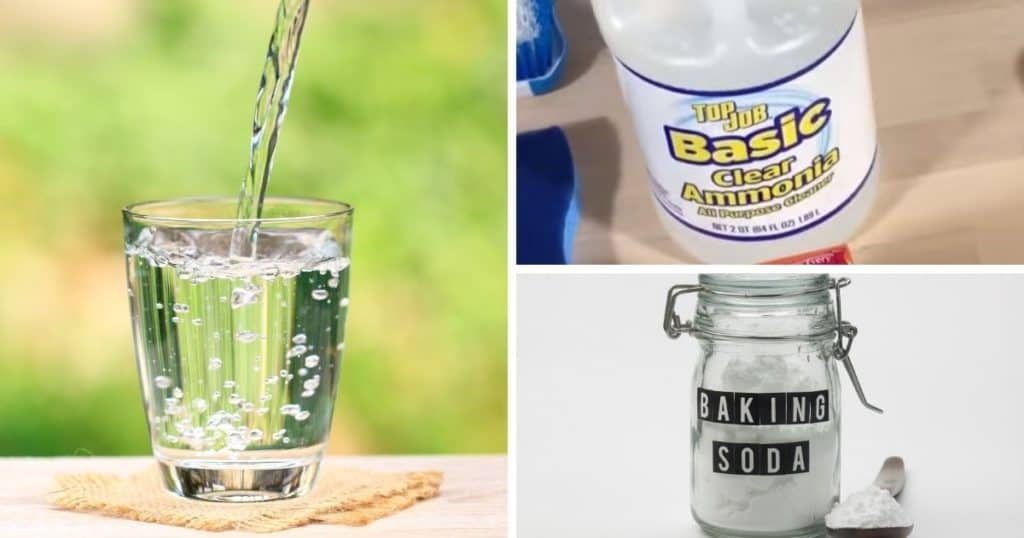
I filled a container with warm water, then added 1/4 cup of ammonia and 1/4 cup of baking soda.
I then soaked one of the sponges in this container and began scrubbing the surface of the bathtub. This method was not very effective, so I moved onto the next option.
Lemon Juice and Salt
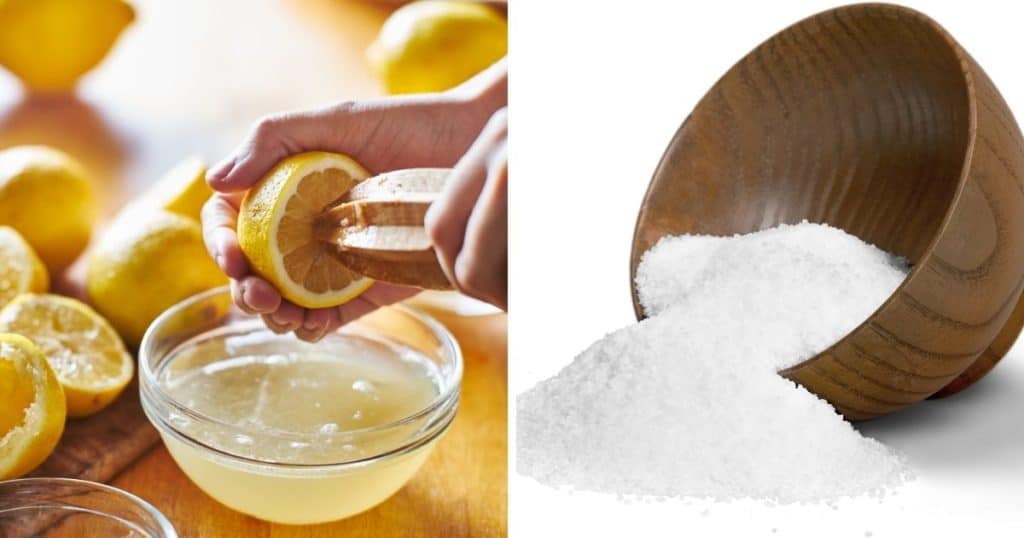
The second method I used is a combination of salt and lemon juice. This method is prevalent online and worth testing out.
I started by pouring salt into a particularly dirty part of the tub and then squeezed the lemons to pour juice over the salt. The idea is the acidity of the lemons will help break up the stains and grime while the salt provides an abrasive material to help with scrubbing.
After letting it soak in for a moment, I scrubbed it with the brush. While this method removed some of the dirt, it was not sufficient.
Dish Soap and Vinegar
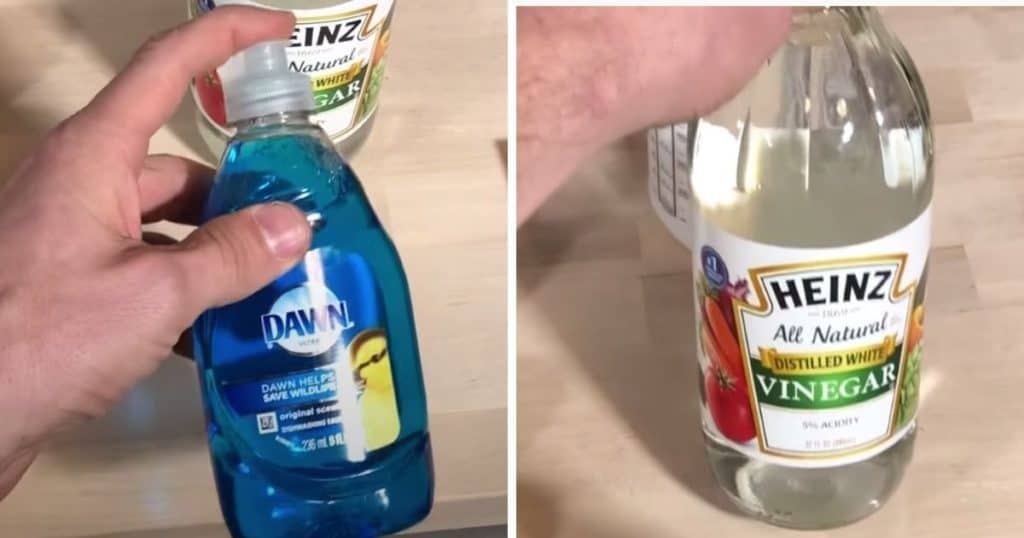
The third option involved using a one to one ratio of Dawn dish soap and a cup of vinegar.
For this one, I combined the dish soap with the vinegar and put the mixture into a spray bottle.
I then sprayed the content thickly onto the surface of the tub and let it sit for 45 to 60 minutes before starting to scrub with the sponge.
I really didn’t have much luck with this method.
Mr. Clean Magic Eraser
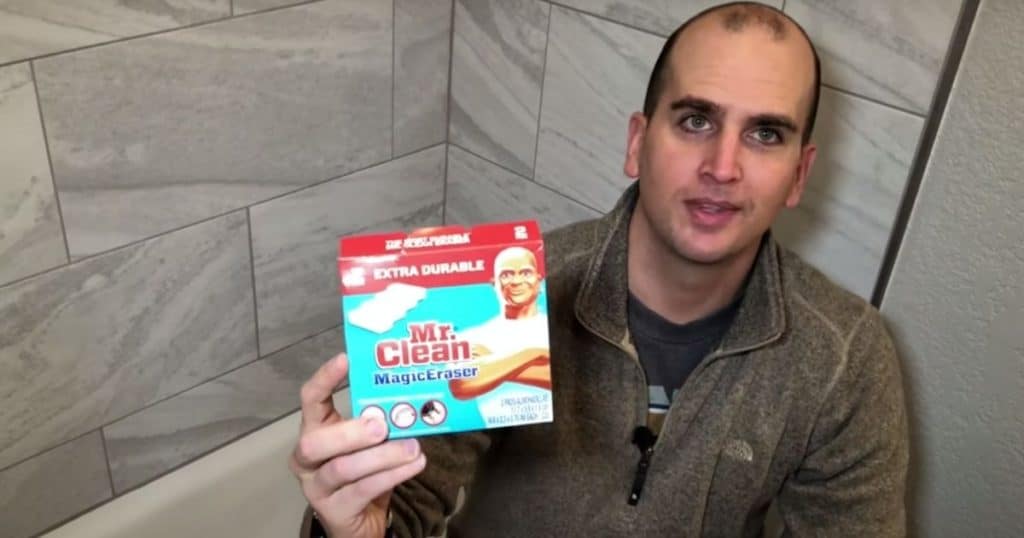
The last cleaning method involves using a Mr. Clean Magic Eraser.
I opted for the extra durable version of the eraser, and all it needed was to get wet and start scrubbing.
After only a few minutes of working the tub stains with the Magic Eraser, it proved to be the most effective option and was able to remove dirt and grime more quickly and efficiently than the other options.
This method is not only effective, but I found that it will not damage the porcelain finish, as long as the scrubbing is not done vigorously. After all, the magic eraser is effectively a very high grit sandpaper.
Borax
While we did not include Borax in our testing process, one of my YouTube subscribers recommended it, so I thought it is worth mentioning here.
Chris claims that this product can remove most staining within scratches in the enamel. As I didn’t try this method, I cannot comment on its effectiveness. However, if you have tried it, I would love to hear in the comments your experience with it.
Tip: as with all chemical agents, ensure that you are using the proper protective skin and eye cover before utilizing Borax.
So of the methods tried, here is my list from most to least effective:
- Mr. Clean Magic Eraser
- Dawn Dish Soap and Vinegar
- Lemon Juice and Salt
- Warm Water With Ammonia, and Baking Soda
Does Vinegar Hurt Porcelain?
Vinegar is often used as a cleaning agent in bathrooms, and for a good reason! Vinegar effectively kills mold and bacteria, making it excellent for many cleaning ventures in the bathroom. It is important to note that strong or undiluted vinegar can damage the enamel finish on your porcelain, which makes it more susceptible to future damage and can leave it looking dull as well.
If you intend to use vinegar to clean porcelain fixtures, ensure that you dilute strong kinds of vinegar or use a vinegar solution designed to clean these fixtures to prevent potential damage.
Can You Use Bleach On Cast Iron Tubs?
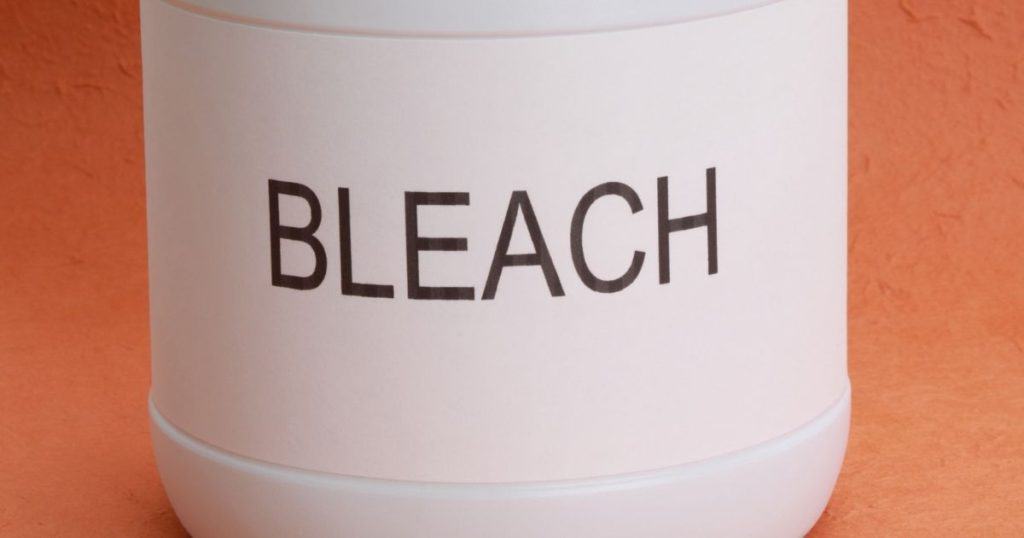
Bleach can be an effective cleaning agent and can be used to combat especially tough staining in your cast iron tub. However, you need to be aware that you should never use bleach alongside other cleaners, especially vinegar or ammonia, as they will create toxic fumes that are incredibly harmful. As with most chemical cleaners, ensure that you protect your skin and eyes by wearing rubber gloves and goggles.
How To Clean Your Porcelain Fixtures Weekly?
As with most home cleaning, the best way to avoid needing deep cleans like the kind we described above is through regular maintenance. Though it is easy to forget to do so, if you can get into the habit of wiping down your sink and bathtub after every use, you will be able to prevent the buildup of calcium and other minerals that contribute heavily to staining.
Since cleaning fixtures after every single use is challenging at best, cleaning your porcelain fixtures weekly with water mixed with dish soap and a non-abrasive sponge will help prevent you from needing to do deep cleans down the road. If you prefer to use more natural products for your cleaning, lemon juice and vinegar work well as natural cleaners thanks to their antibacterial properties. Note that both of these options are still acidic in nature, so it is essential to remember to rinse whatever fixture you are cleaning when you finish.
How To Deep Clean Your Porcelain Fixture?
The best deep cleaning method for your porcelain fixtures depends a bit on what kind of filth they have accumulated. For general soap scum and other types of staining from general use, the Mr. Clean Magic Eraser is incredibly useful, as we discovered through our tests. Keeping a couple of these erasers on hand can help with the kind of cleaning that regular use will require.
For fixtures that are extremely filthy, using some of the cleaning methods described in our tests can be effective, but they require additional preparation. The magic erasers are so useful because they require virtually no preparation and are quick and easy. If you have extensive staining or grime on your fixtures, you can use the cleaning methods described and let them sit and soak for longer to help lift the dirt from the porcelain.
Conclusion
Dealing with filthy cast iron tubs can be overwhelming, especially if you’re renting or moving into a home that hasn’t been cleaned in a long time. However, as we have learned through the testing process, it isn’t that hard to clean these types of fixtures as long as you approach the problem with the right preparation and the correct items at hand!
If you are a weekend warrior like myself, Subscribe to my youtube channel. I have many videos to help you around the house with your repairs and improvements.
